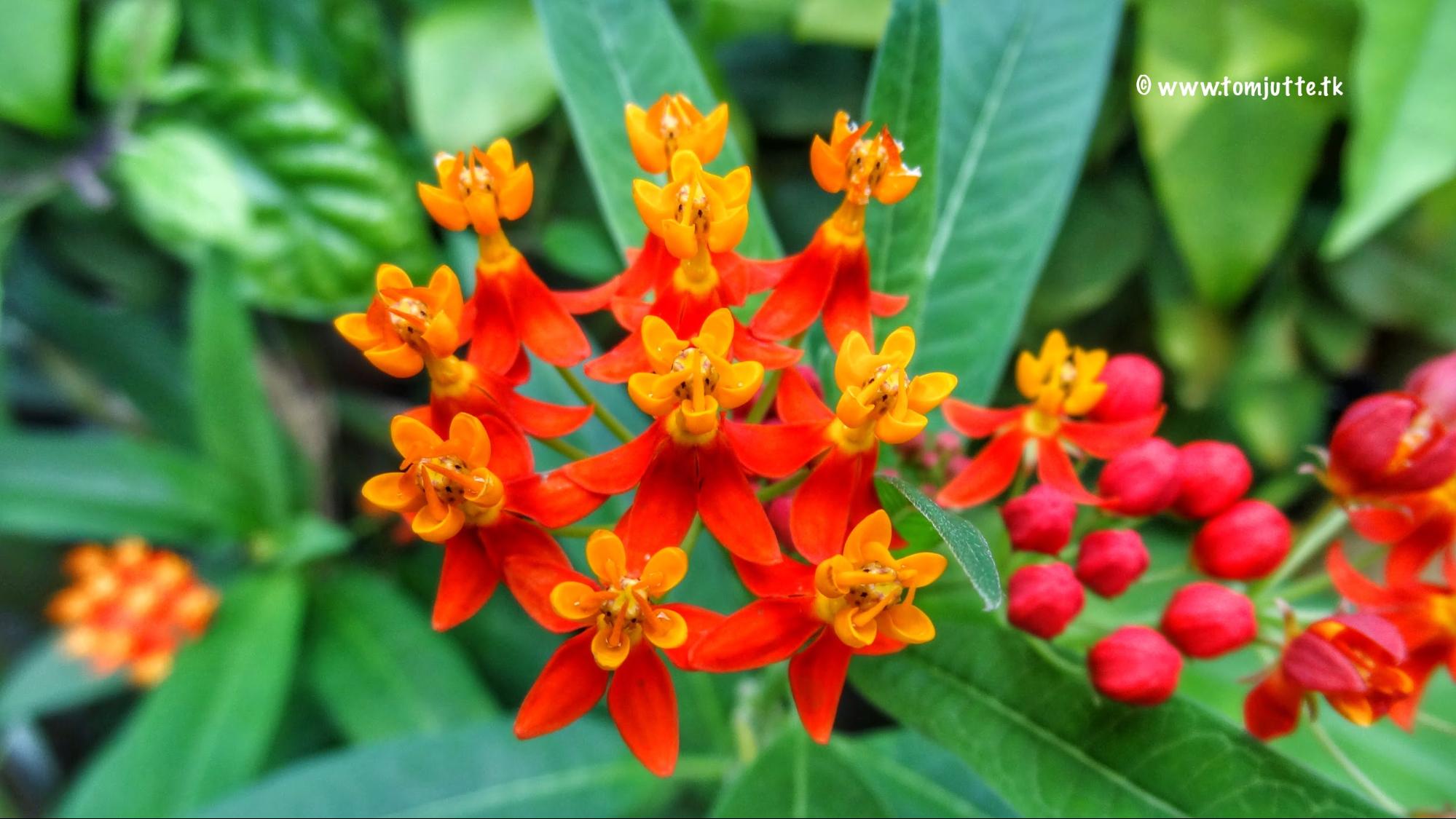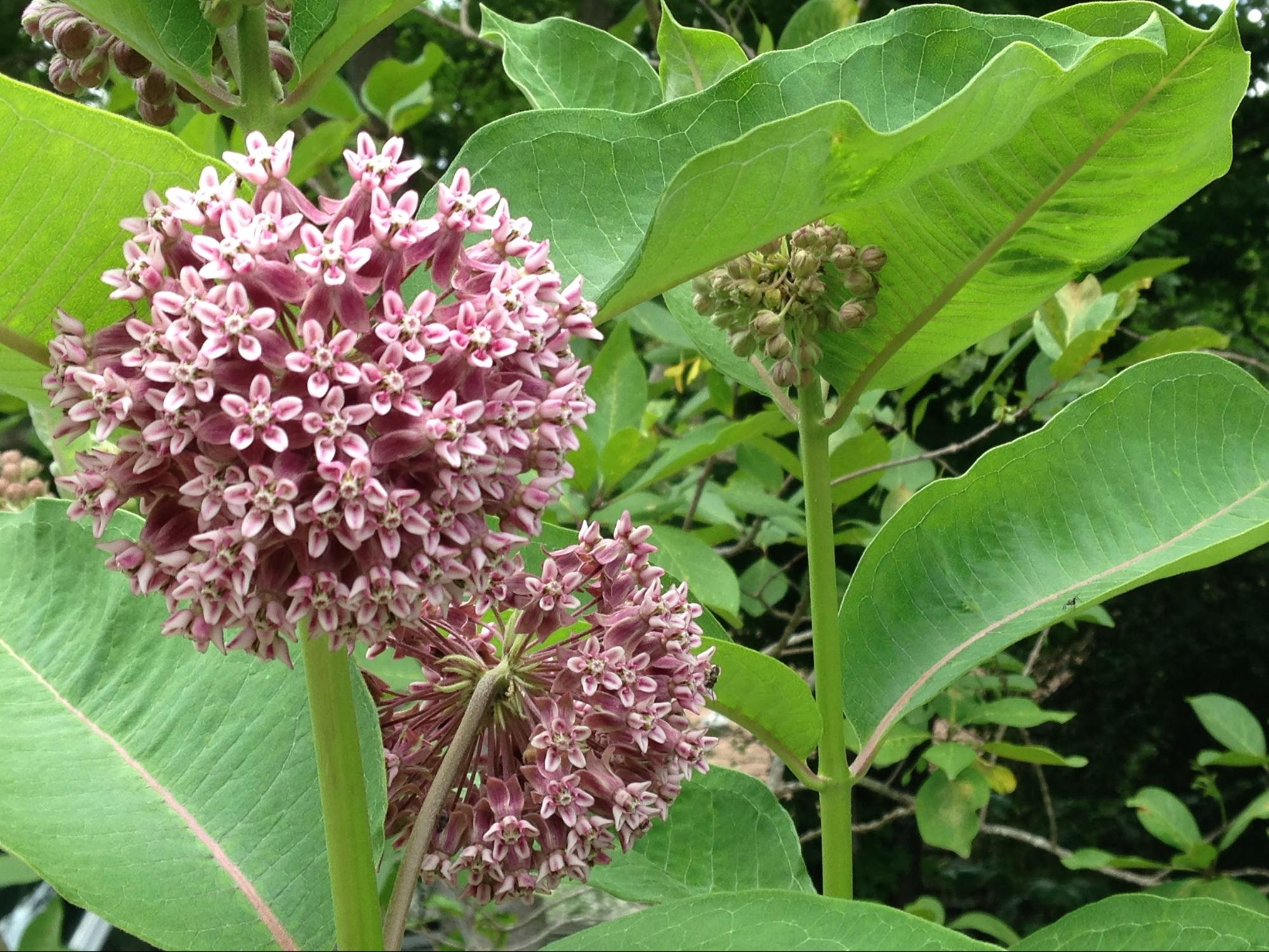The Real Ultra-marathoners
Pause for a minute and think about how far you travel in a day. The average American walks around 2.5 miles each day. If you are an ultra-marathoner you might cover up to 100 at most. As a runner myself, the furthest I've run at one time is somewhere around 16 miles. Now what if I told you that you could be easily outstripped…by a butterfly.

During their fall migration in eastern North America, monarch butterflies (Danaus plexippus) travel on average 50 to 100 miles every day! If you have ever watched a butterfly flutter sporadically past, it might be hard to imagine them making it anywhere fast. However, every Fall, migratory monarchs travel from as far north as Canada all the way down to Mexico, some traversing an astounding 2,500 miles! Monarchs weigh less than 1/20 of an ounce. If you were to scale this distance for our size difference, a 150-pound person would have to circumnavigate the globe 13,000 times to match these insects. We may now feel our egos collectively deflate due to the fact that this beautiful and undeniably scrappy little insect has outdone us all.
Once they arrive in Mexico, monarchs roost together in the very same trees as their great-grandparents the year before. Chemicals in their bodies that are sensitive to light and magnetic fields are thought to be the source of their unparalleled navigation abilities which allow them to locate their ancestral roosts, despite having never been there before. Considering half of us get lost trying to find our own cars in a parking lot this is a pretty impressive feat. Once again it seems the monarchs have outdone us.
The Fall of a Dynasty
In spite of all the monarch's seemingly magical powers, their populations have suffered shocking declines over the past few decades. Researchers estimate the population size of eastern migratory monarchs by evaluating the area of forest occupied by overwintering colonies in Mexico. In 2013, scientists recorded an all time low of 1.6 acres occupied by wintering monarchs, which represents a 90% decline from average colony sizes since records began in the early 1990s. While these declines can be attributed to a number of factors, one major contributor is habitat loss occurring across their entire migratory range.

For decades, agricultural fields in the midwestern US served as critical monarch breeding habitat. Milkweed (genus Asclepias), the host plant for monarchs, is the only plant that caterpillars feed on. There are over 100 species of milkweed identified to date. The most common milkweed species in the US (Common milkweed, A. syriaca) functions very much as its name suggests: as an agricultural weed. It once thrived alongside crops like corn and soy and was difficult for farmers to eradicate. With corn and soybeans covering 96,000,000 acres in the US, this alone provided extensive habitat for monarchs traveling all along the Corn Belt.
However, with the emergence of herbicide tolerant (HT) crops in the past two decades, it has become possible for farmers to effectively eliminate weeds from their fields. In the past, farmers would spray herbicides on row crop fields just prior to planting. With HT crops, farmers can now coat their fields in glyphosate without harming their crop. Milkweeds and other natural weeds are highly susceptible to glyphosate (common name: RoundUp) and die within 2-3 weeks, taking out any monarch eggs and caterpillars with them. And once the milkweeds are done, they do not come back. Suddenly, a large fraction (60% or more) of milkweed has disappeared from the central U.S., leaving hapless monarchs to flutter through millions of acres of what has become a veritable desert.
As the monarch populations plummeted, gardeners across the country stormed their local nurseries in search of milkweed to save their beloved butterflies. Just replace the habitat lost to agriculture and the monarchs should bounce back, right? Unfortunately this is not the end of the story.

A tiny protozoan can cause big problems for monarchs
Among all the other challenges facing monarchs, they are also susceptible to infection by a debilitating protozoan parasite called Ophryocystis elektroscirrha (OE). OE is spread when spores from the abdomens of infected adult monarchs are scattered on milkweed plants when a female monarch is laying eggs. The unsuspecting caterpillars devour the spores as they happily munch away on the milkweed leaves and infection occurs. In the most severe cases, the spores replicate so extensively within the caterpillar that the emerging adult monarch is severely deformed and unable to emerge from its chrysalis or fully expand its wings. Most often an infected monarch will look totally normal, but the masses of spores between its scales accelerate dehydration and reduce flight performance.
This disadvantage becomes significant during the migratory season. As the monarchs begin the long journey southward, only the healthiest individuals are likely to survive. The infected individuals are weeded out during the migration, resulting in a healthier population at the end of migration that repopulates the continent in the spring. During the fall and winter months throughout the monarch breeding range, the milkweed plants die back, and spores are not able to survive the repeated freeze-thaw cycles. Thus, monarchs returning from Mexico in the spring encounter clean milkweed in the next growing season.
As in any population, some proportion of disease is natural, and scientists think that this parasite has been present in monarch populations for a long time (5 decades or longer). However, a foreign plant may be altering these patterns of disease in monarchs through even the most well intentioned milkweed gardens.
What's the matter with tropical Milkweed?
When you wander through a garden center, you will likely find milkweed with beautiful red and orange flowers, commonly called tropical milkweed or bloodflower. “The monarchs will love this!†you may tell yourself as you load the entire tray into your cart. You aren't wrong — monarchs do love this milkweed! But if you squint a little closer at the label and you will see that this is tropical (Asclepias curassavica), not native milkweed, and that little word makes all the difference.


Because tropical variety is adored for its stunning flowers, rapid growth and easy propagation, gardeners often prefer these over the native varieties which usually don't flower until the second or third year of growth and are less tolerant to being potted than their tropical cousins. However, native milkweed has a key advantage that you may not expect: it could help reduce disease in monarchs.

Native milkweed species naturally senesce (die back) in the fall. This marks the end of the reproductive season and signals the monarchs to migrate. In the southern US, where there may not be a hard freeze, tropical milkweed can persist throughout the winter. This has several implications.
- Instead of dying back in the fall and resprouting as spore-free milkweed in the spring, tropical milkweed remains in flower and leaf year-round when protected from hard freezes. This means that migratory monarchs could be returning to tropical milkweed that is already covered in parasite spores.
- In gardens where milkweed does not die back, monarchs may forego the migration all together and continue reproducing throughout the winter. In studies conducted at the University of Georgia, OE prevalence was on average 5 times higher among winter-breeding monarchs in the southern U.S. (compared to monarchs in Mexico) and up to 9 times higher among winter-breeding monarchs in CA (compared to overwintering CA monarchs).
While this may sound like another blow to the monarchs, we can all play our part in the solution.
What should you do?
Planting milkweed is absolutely crucial for preserving monarchs across their entire migratory range. Educate yourself on what species of milkweed are native to your region. If you already have tropical milkweed in your yard, replace it with native milkweed if possible. If not, begin cutting your tropical milkweed back in late October and throughout the winter as it grows back, until March, when the monarchs return north from Mexico. Sometimes it can be difficult to find native milkweed species in nurseries, so another alternative is to order seeds online and scatter them in your yard in the late fall. They will lie dormant throughout the winter and sprout in the spring.
If you are eager to get involved in monarch research you can participate in a citizen science project called Project Monarch Health, where you will test monarchs in your area for OE and share your samples and observations with scientists at the University of Georgia. Citizen scientists contribute thousands of samples every year and are critical in tracking the spread and prevalence of OE in North America.

Whether you decide to be a citizen scientist, to add a milkweed plant to your garden or simply to cheer on the next monarch marathoner that flutters past, we can all agree that monarchs have outdone us in terms of their amazing strength and beauty. The least we can do is help them along the way.
 |
Hayley Schroeder is an undergraduate at UGA studying Ecology and Entomology. She is an enthusiastic foodie, advocating for food that nourishes not just the people eating it, but communities, farmers and the earth as well. She is also a friend to all insects and can be easily spotted on campus by her butterfly net. Contact her at hayleyadair37@uga.edu. More from Hayley Schroeder. |
About the Author
- athenssciencecafehttps://athensscienceobserver.com/author/athenssciencecafe/April 17, 2020
- athenssciencecafehttps://athensscienceobserver.com/author/athenssciencecafe/April 12, 2020
- athenssciencecafehttps://athensscienceobserver.com/author/athenssciencecafe/April 3, 2020
- athenssciencecafehttps://athensscienceobserver.com/author/athenssciencecafe/March 30, 2020







